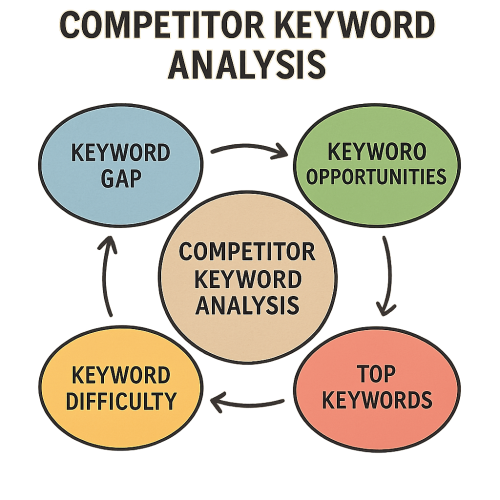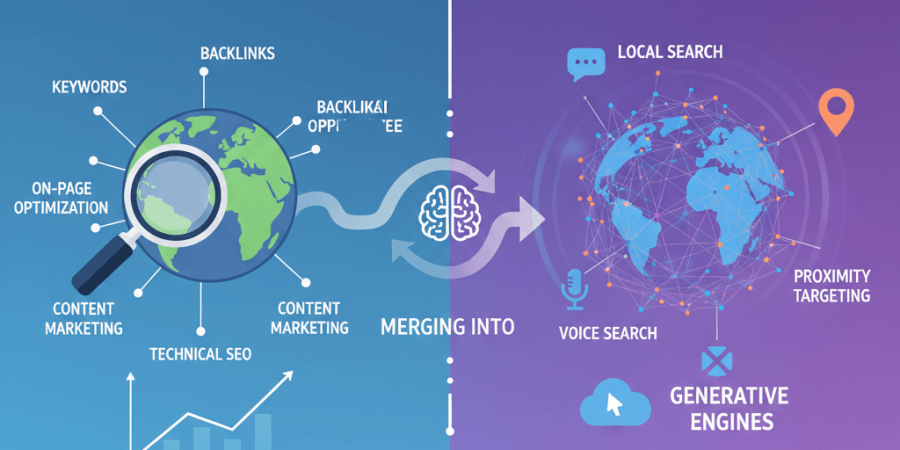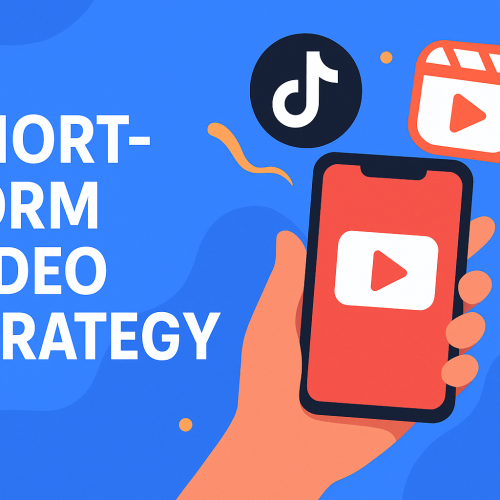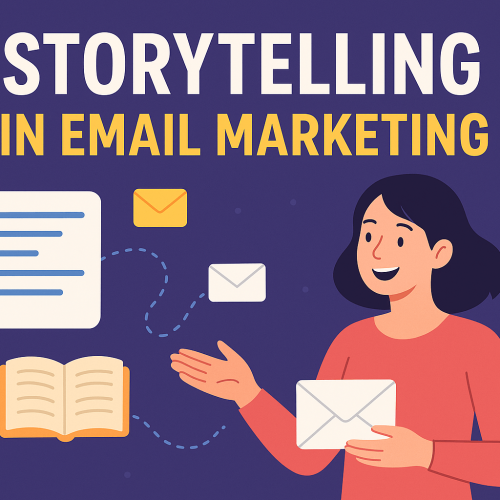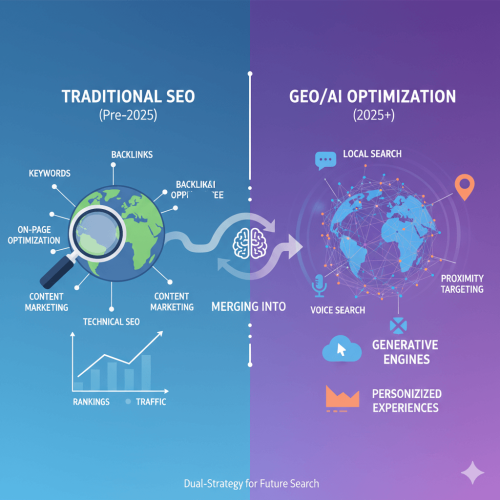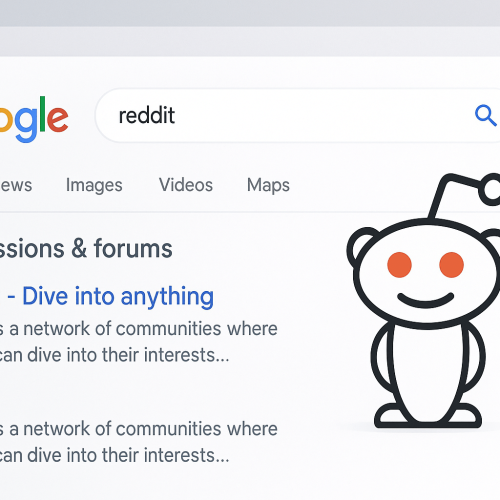SEO vs GEO: The Essential Guide to Search Visibility in 2025
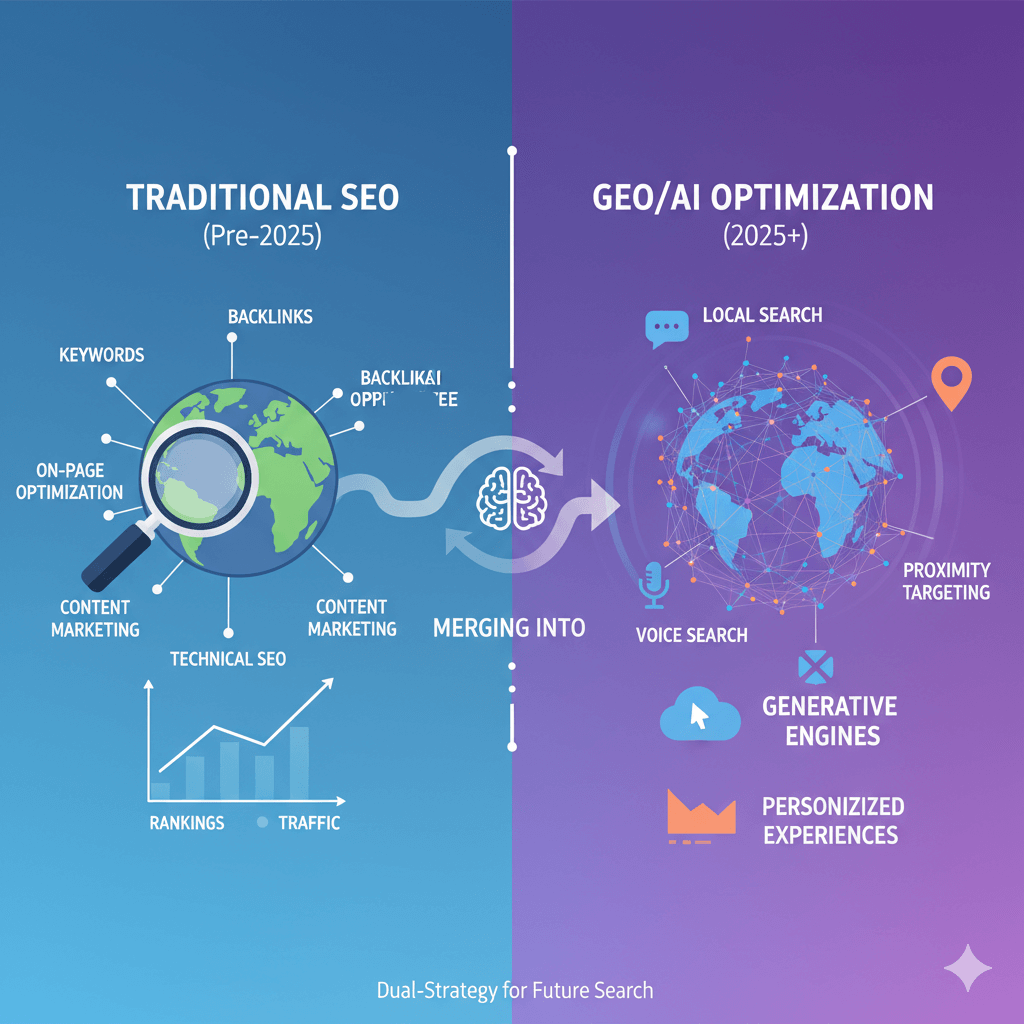
The search landscape has fundamentally transformed. While 14 billion Google searches happen daily, a striking 58% now end without a single click—users find complete answers directly in AI-generated responses. This shift demands a new approach: combining traditional SEO with Generative Engine Optimization (GEO) to maintain and grow your digital visibility.
Understanding the New Search Reality
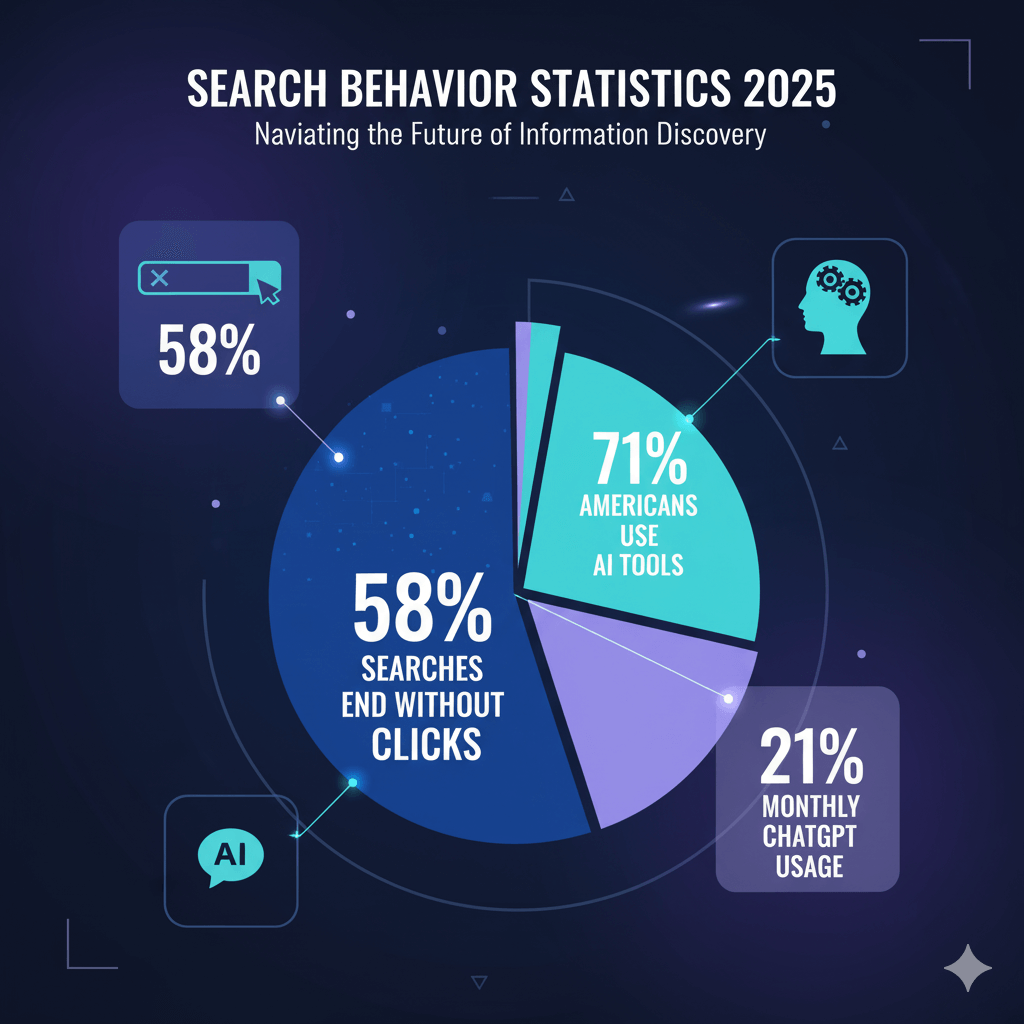
Search Generative Experience (SGE) snippets have become the new battleground for visibility. These AI-powered responses pull information from multiple sources, creating comprehensive answers that appear above traditional search results. Consider this: 71% of Americans now use AI tools for information searches, with 21% visiting ChatGPT monthly.
The impact on businesses is immediate and measurable. Traditional SEO strategies that once guaranteed traffic now require enhancement with GEO techniques to maintain visibility. Yet this doesn’t signal SEO’s death—it marks an evolution where both strategies work synergistically.
Why Traditional SEO Still Dominates (But Needs GEO Support)
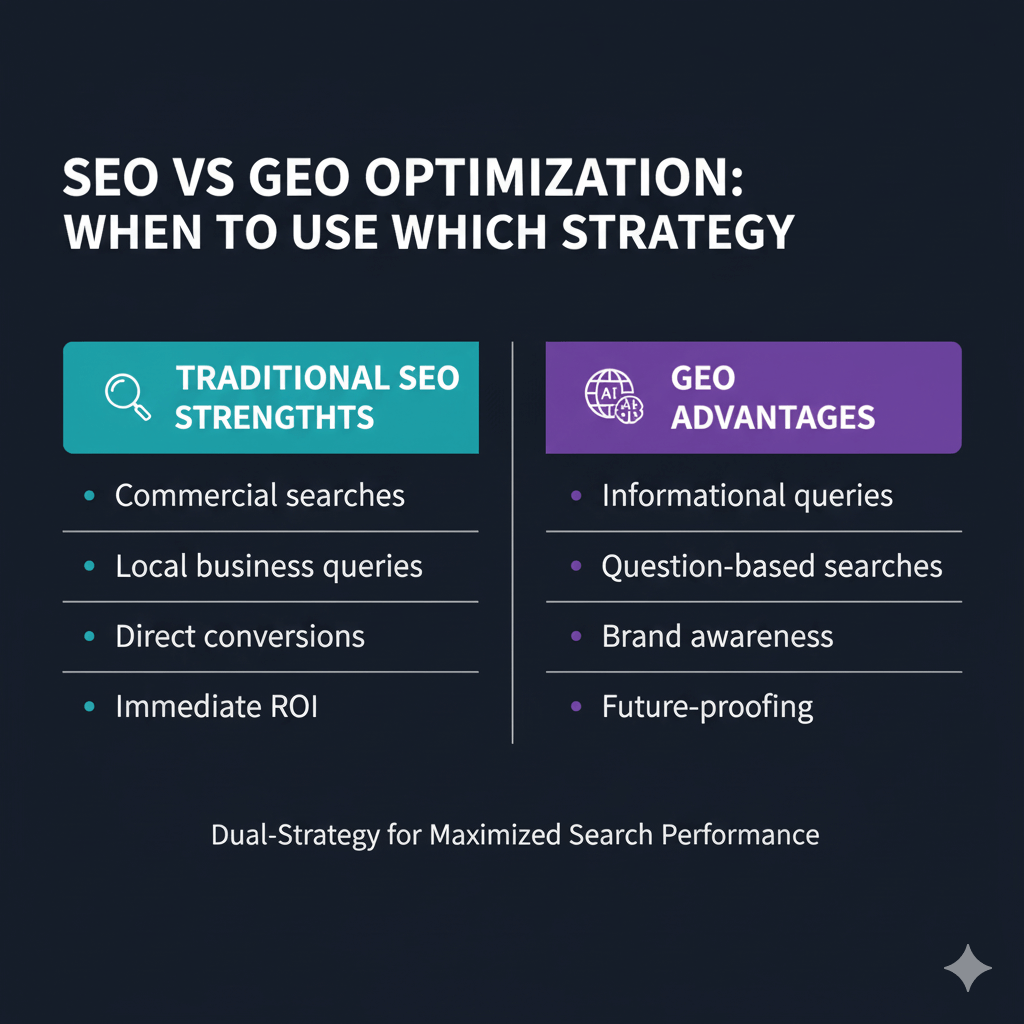
Despite AI’s rapid adoption, Google processes 373 times more searches than ChatGPT receives prompts. Nearly every ChatGPT user (99.8%) continues using Google for searches. This data reveals an important truth: traditional SEO remains the foundation of search visibility, while GEO amplifies your reach.
Traditional SEO excels for:
- Commercial intent searches where users seek specific products or services
- Local business queries requiring location-specific results
- Transactional searches leading directly to conversions
- Brand searches where users know exactly what they want
Companies implementing both strategies report 40-60% better long-term results compared to single-approach competitors. The synergy creates compound benefits—GEO-optimized content often performs better in traditional search too.
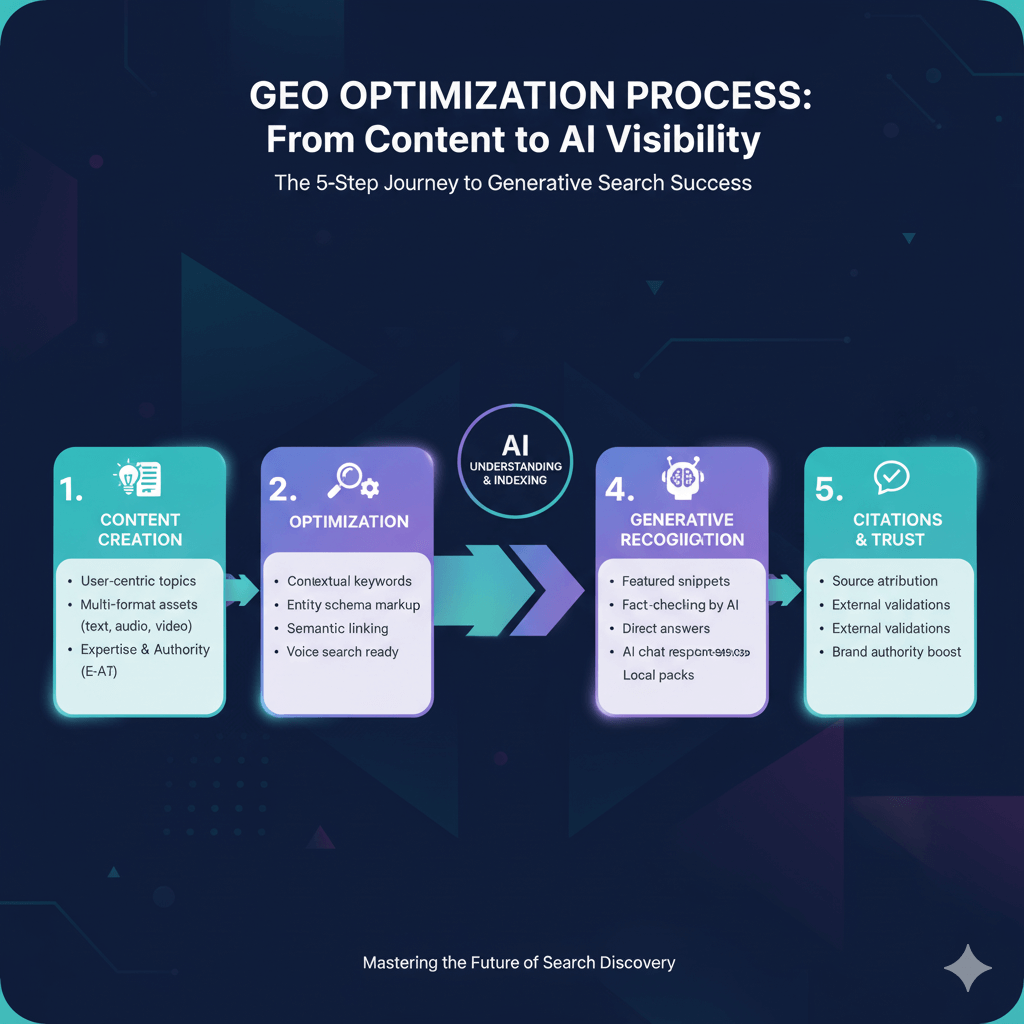
5 High-Impact GEO Strategies That Drive Results
1. Answer Questions Directly and Comprehensively
Structure content with immediate, clear answers to common questions. Begin sections with concise responses before diving into details. This approach helps AI systems extract and cite your information accurately.
2. Build Topic Authority Through Content Hubs
Create comprehensive resources addressing 8-12 related questions around core topics. One well-structured hub can capture AI citations for multiple queries while boosting traditional rankings by 65% or more.
3. Optimize for Conversational Search
Target natural language queries like “What’s the best way to…” instead of just keyword phrases. Voice search and AI prompts use conversational language—your content should match this pattern.
4. Implement Strategic Content Structure
Use clear heading hierarchies (H1, H2, H3) that guide both AI systems and human readers. Short paragraphs (2-3 sentences), bullet points, and numbered lists improve AI parsing while enhancing readability.
5. Include Authority Signals Throughout
Incorporate statistics from reputable sources, expert insights, and links to authoritative websites. AI systems evaluate credibility when selecting sources for SGE snippets.
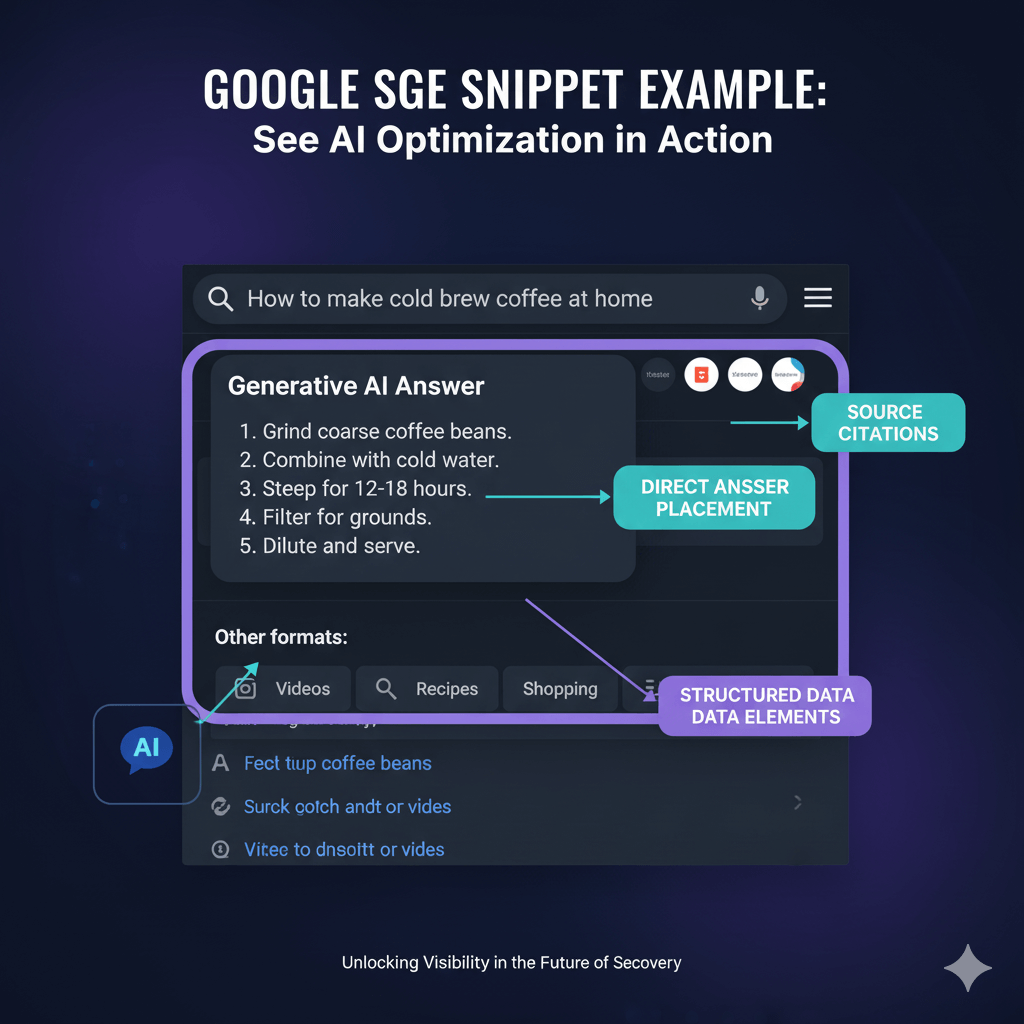
Measuring Success: Track What Matters
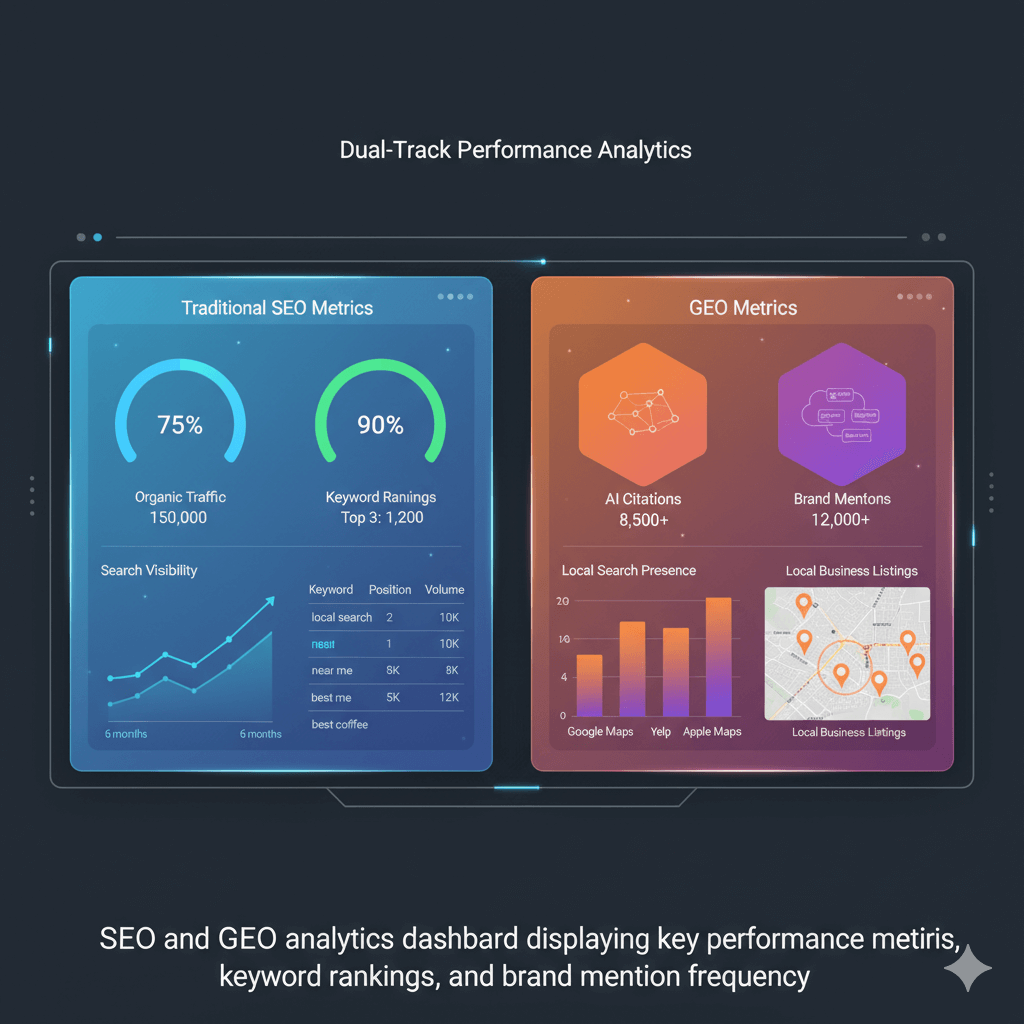
Traditional SEO metrics remain crucial but require GEO-specific indicators for complete performance assessment:
Essential SEO Metrics:
- Organic traffic growth and keyword rankings
- Click-through rates and conversion data
- User engagement signals (session duration, bounce rate)
- Backlink growth and domain authority
Critical GEO Indicators:
- Appearances in SGE snippets and AI responses
- Brand mention frequency in AI-generated content
- Voice search visibility
- Branded search volume increases
Companies tracking both metric sets gain actionable insights for optimization. One B2B software company increased AI citations by 300% in six months while maintaining traditional rankings, leading to 45% more branded searches.
Avoiding Critical GEO Mistakes
Success requires avoiding common pitfalls that undermine both strategies:
Over-optimization kills conversational flow. Keywords stuffed unnaturally into content designed for AI readability actually reduces citation likelihood. Write naturally while incorporating target terms organically.
Shallow content fails both audiences. AI systems seek comprehensive, authoritative information. Provide depth without sacrificing clarity—answer the main question, then address related concerns users typically have.
Neglecting updates diminishes authority. Refresh statistics quarterly, add new information as industries evolve, and maintain accuracy. AI systems favor current, well-maintained content for citations.
Your Strategic Implementation Roadmap
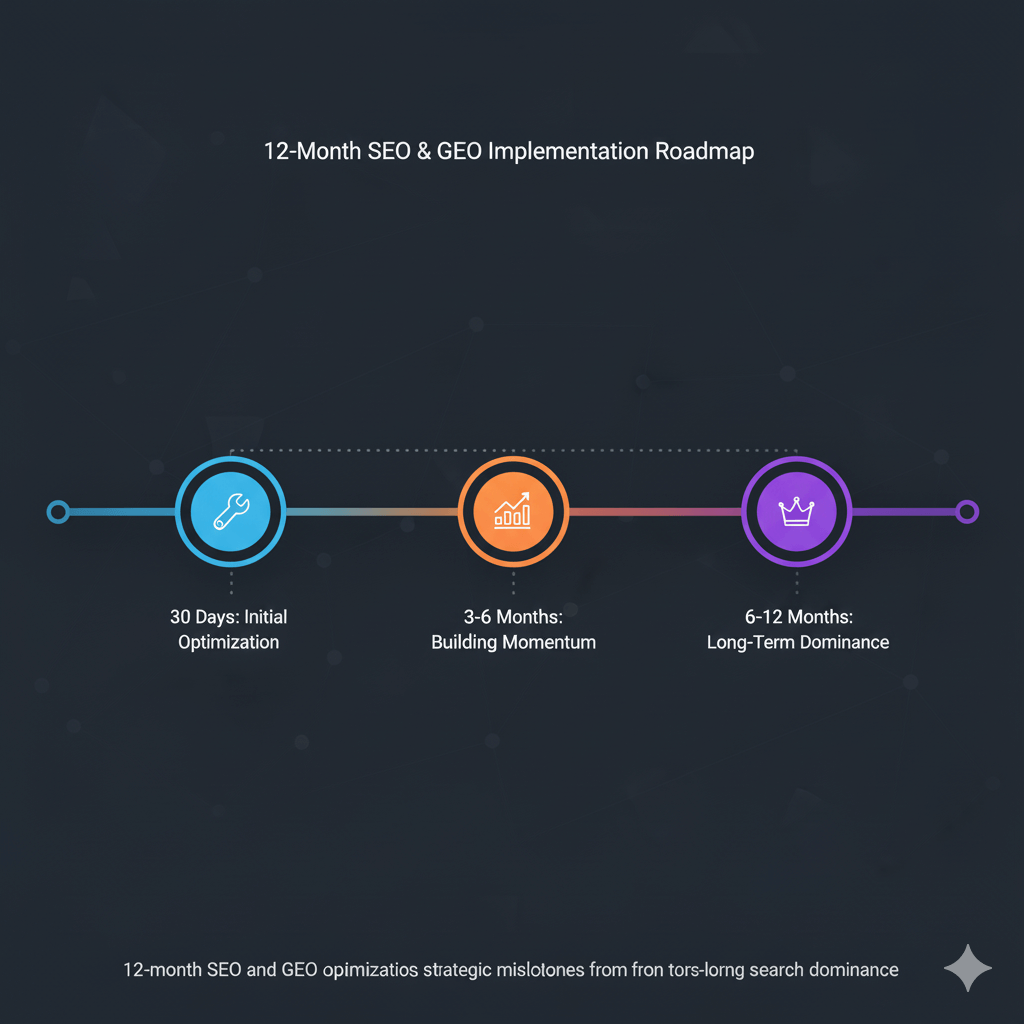
Immediate Actions (Next 30 Days):
Start with your highest-traffic pages. Identify question-based keywords using tools like Answer The Public. Restructure one key piece of content following GEO principles while maintaining SEO strength. Set up tracking for AI citations alongside traditional metrics.
Building Momentum (3-6 Months):
Expand successful approaches across your content library. Create comprehensive question hubs for main topics. Develop content serving both human users and AI systems. Monitor competitor AI visibility and adapt strategies based on performance data.
Long-term Dominance (6-12 Months):
Establish your brand as the go-to authority in AI search results for your industry. Scale proven GEO techniques while maintaining SEO excellence. Train your team in advanced optimization strategies. Continuously adapt as AI search capabilities evolve.
The Competitive Advantage of Acting Now
Early GEO adopters gain significant advantages as AI search features expand. While competitors debate strategy, forward-thinking businesses already capture AI citations and build authority. Companies implementing comprehensive SEO + GEO strategies today will dominate tomorrow’s search landscape.
The data speaks clearly: businesses combining traditional SEO with GEO optimization achieve superior results. Whether you’re seeing traffic changes from AI responses or preparing for search’s future, the time to act is now.
Ready to transform your search visibility? Start by optimizing one cornerstone piece of content for both SEO and GEO. Measure the impact on traditional rankings and AI citations. Then scale what works across your digital presence. The future belongs to those who master both disciplines today.
Related Posts
Mastering Zero-Click Marketing: How Structured Data & FAQ Content Fuel Featured Snippets

